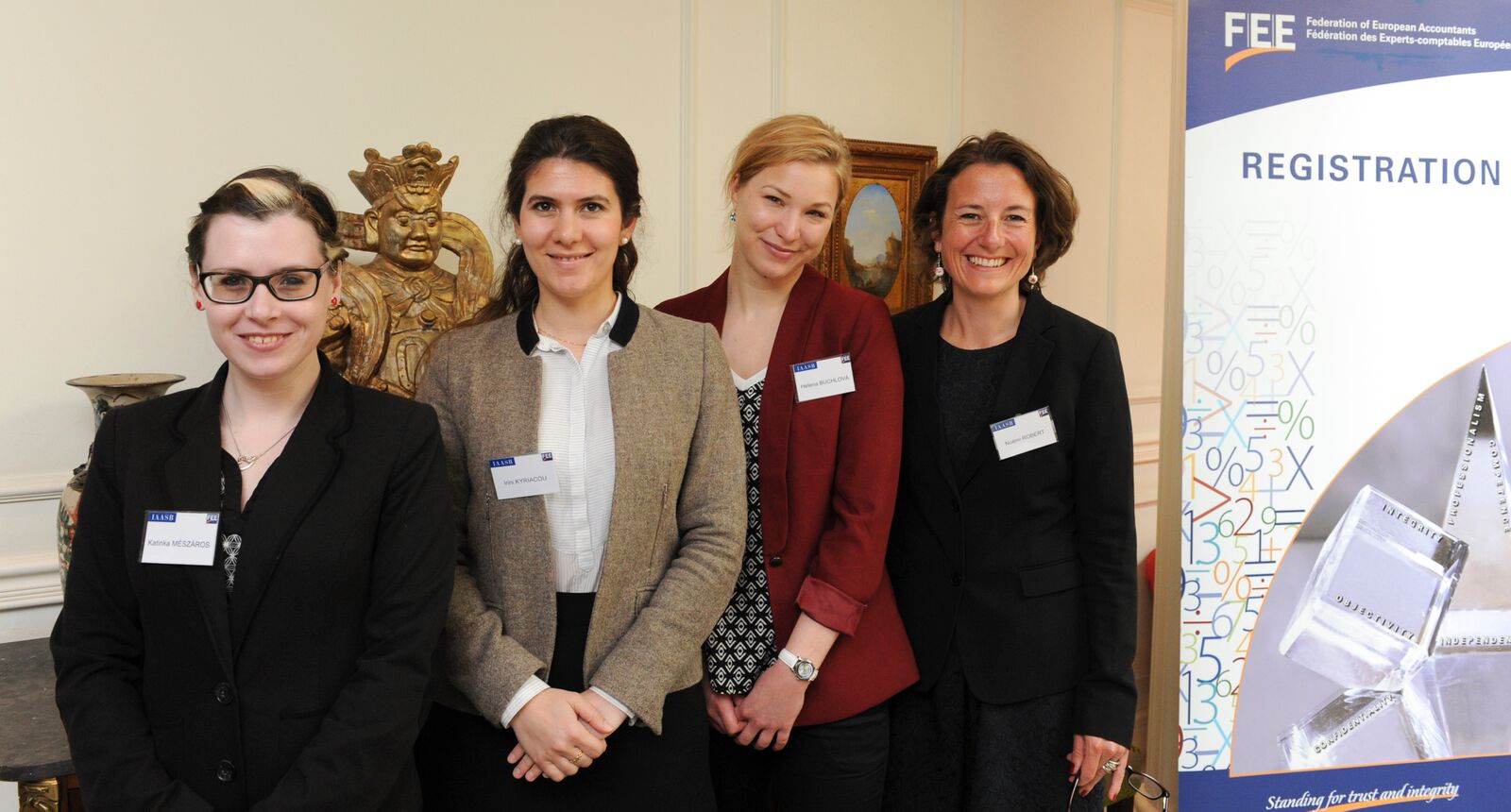
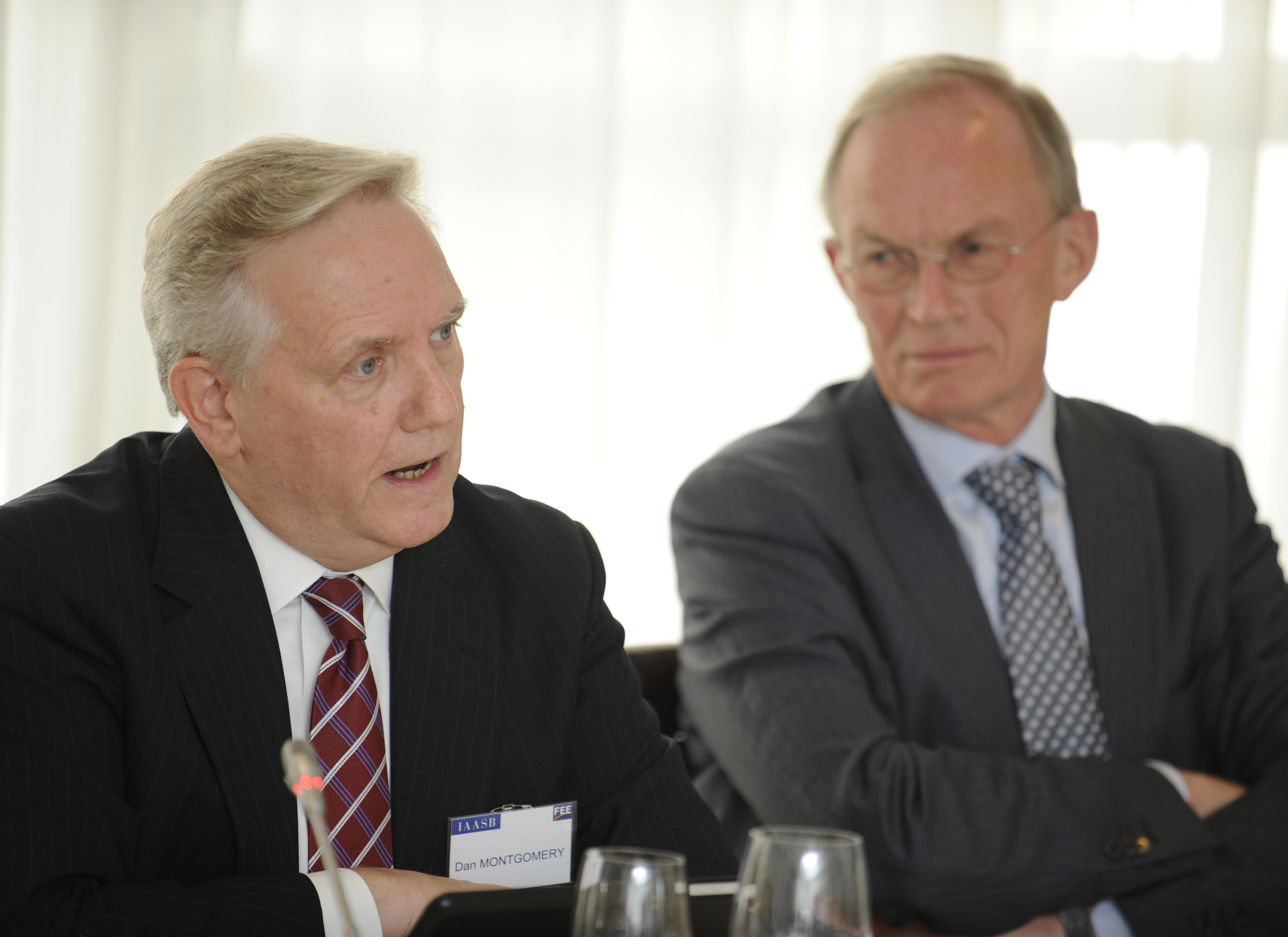

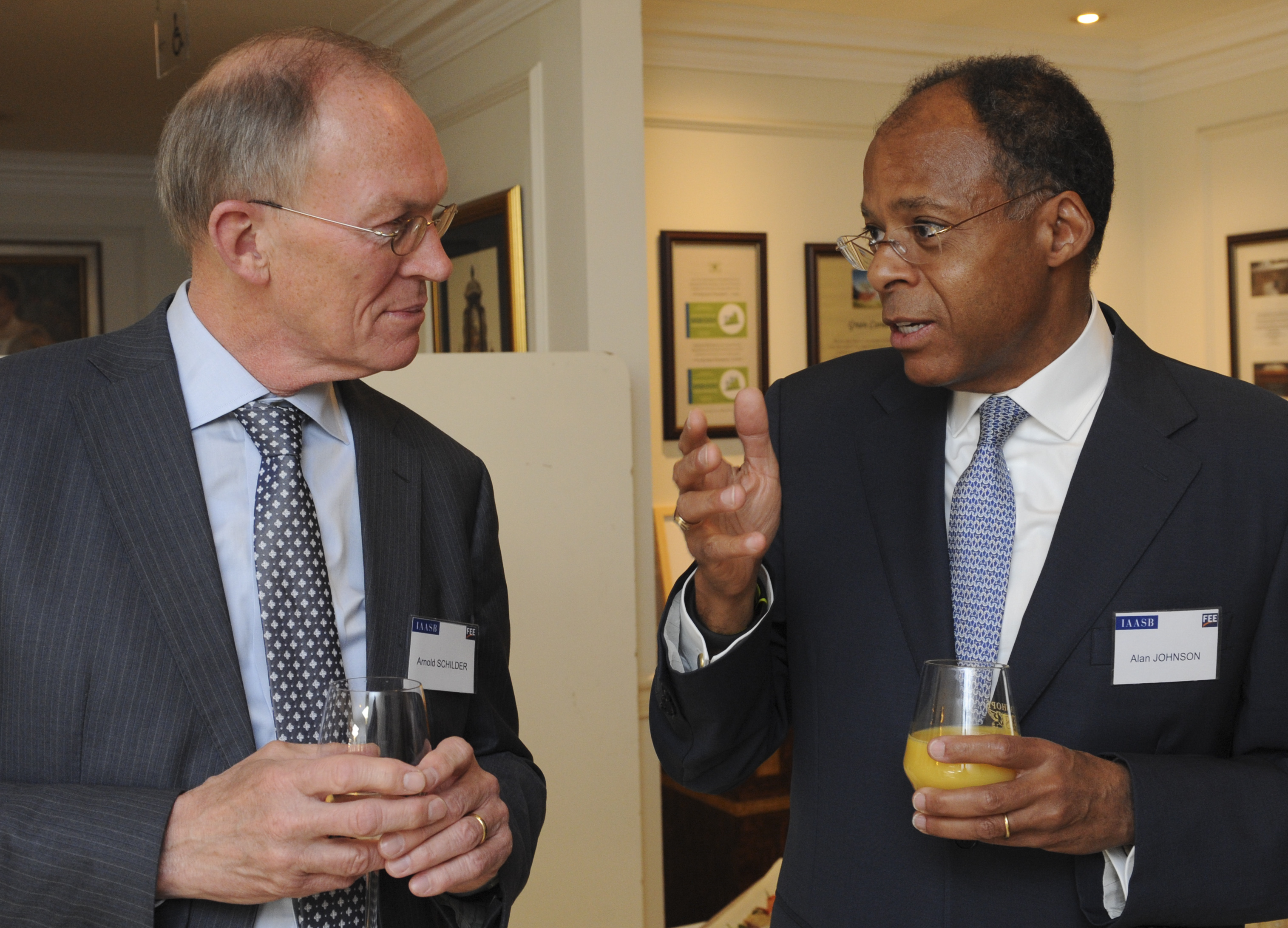
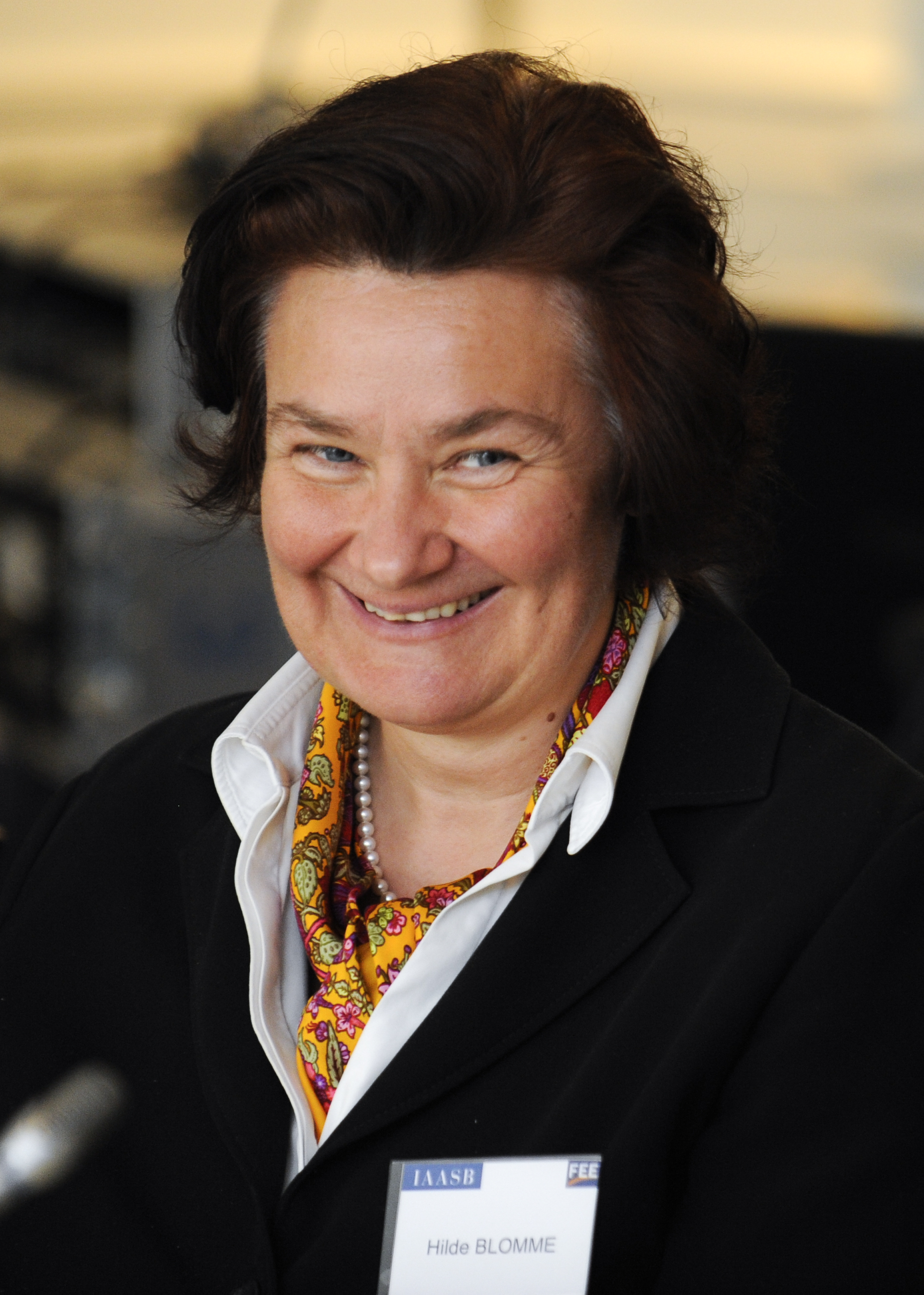

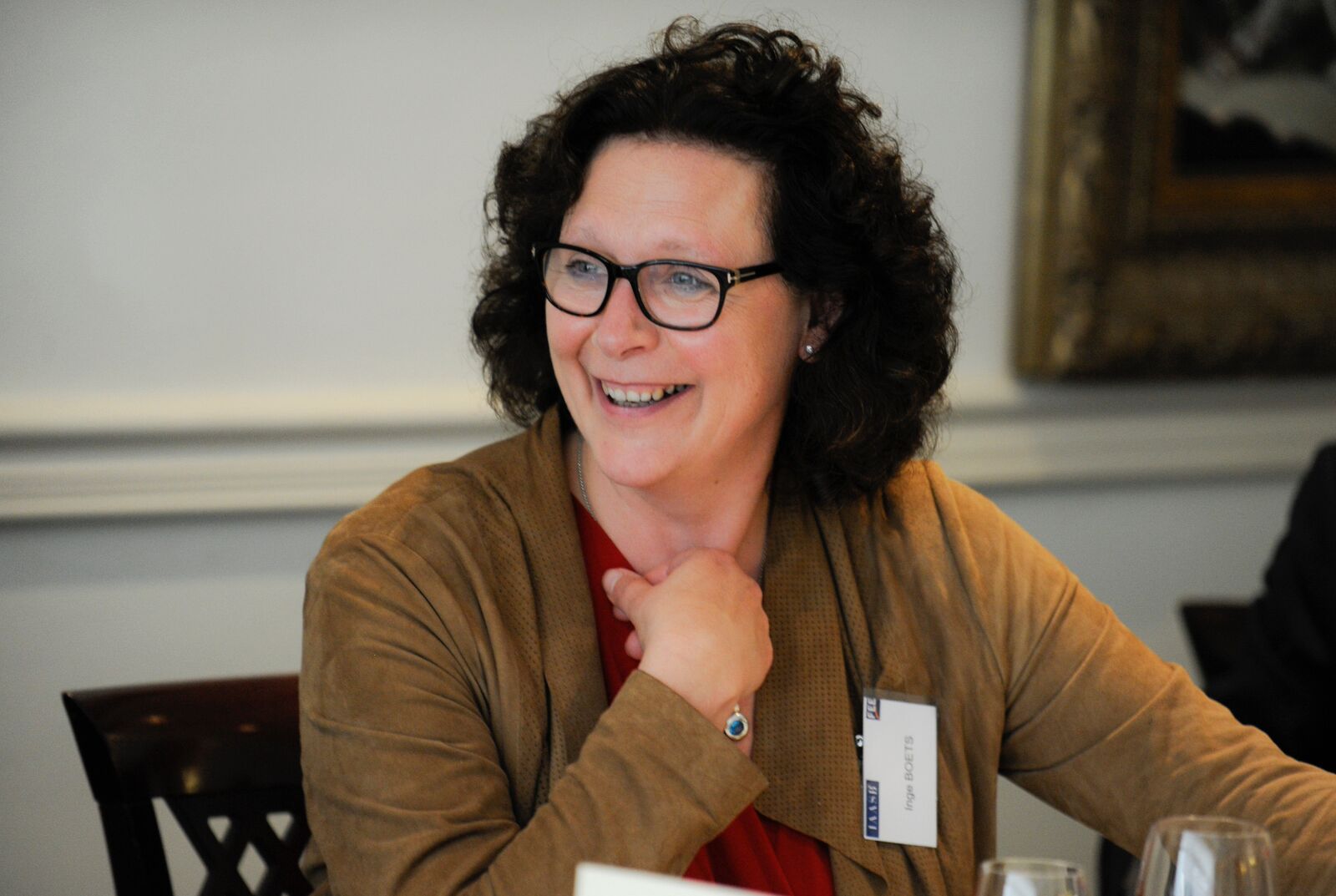
Introduction
This document provides a short summary of a roundtable discussion about the need for more transparent auditor reporting and on enhancing audit quality. The event was jointly hosted by the IAASB and FEE on April 23, 2015, in Brussels, Belgium, and was part of a global outreach. The feedback received on these matters will inform the IAASB’s future standard setting projects in 2015 and beyond. The proceedings of the roundtable were designed to encourage frank discussion among participants in order to openly share their views on these strategic topics.
Participants consisted of experienced professionals from across EU Member States, who either hold positions with audit committees of companies in different sectors and industries or have experience as a corporate governance stakeholder. Attendance was by invitation only. The roundtable was held under the Chatham House Rule (i.e., participants are free to use the information received from the event, but neither the identity nor the affiliation of the speaker(s), nor that of any other participant, may be revealed).
Key Discussion Themes
Auditor Reporting
The IAASB’s new and revised Auditor Reporting standards are intended to revamp and promote the auditor’s report, not solely as a means to an end, but rather as an informative, valuable and meaningful product of the audit of the financial statements. The new auditor’s report aims to enhance the value of the audit, and contribute to the continued relevance of the profession.
For many, the most interesting and significant outcome of the IAASB’s auditor reporting project is the requirement for auditors of listed entities to include a new section in their auditor’s reports to describe key audit matters (KAMs), i.e. matters that were of most significance during the audit.
Auditor Reporting on KAMs
KAMs are intended to provide transparency to the users of the auditor’s report. Participants posed a number of questions about what constitutes a KAM, the basis of assessment thereof, and who should be determining what has to be included in the auditor’s report as a KAM.
It was explained that the natural starting point for KAMs should be from the matters communicated to the audit committee as they are typically the matters that required the most of the auditor’s attention. Then, depending on the nature of the issues and other factors (such as the extent of discussion with the audit committee), the auditor assesses which of these issues merit being included in the auditor’s report as KAMs. The auditor bears sole responsibility for what is to be reported as a KAM; however, participants noted that advance discussion with management is to be foreseen.
Participants engaged in a discussion about the understandability of the auditor’s reports and whether the language used could be simplified to cater for a wider audience. It was recognized that the requirements in the new revised Auditor Reporting standards pose an excellent opportunity for the profession to review the language used in order to add to the transparency and usefulness of the auditor’s report.
The importance of communication between the auditor and the audit committee was emphasized, and there was consensus that this should start as early as possible in the process. In response to a participant questioning the impact of these new requirements on the discussions held between the audit committee and the auditor, and the impact on the workload of the audit committee, it was clarified that the matters to be discussed between the audit committee and the auditor are not intended to change to meet these new requirements. KAMs are not meant to add burden or supplementary interactions, nor limit or replace discussions between the auditor and the audit committee.
Certain potential unintended consequences relating to the inclusion of KAMs were raised by participants. These were:
- The risk of KAMs monopolizing the discussions between the auditor and the audit committee;
- The risk of KAMs being too technical for the average reader, or too boilerplate; and
- The risk of a disproportionate part of this interaction focusing on the form rather than on the substance of the matter disclosed.
The interaction among management, the audit committee and the auditor in terms of reporting was discussed. It was reiterated that it is management’s responsibility to identify and disclose risks and issues relating to the entity, and not the auditor’s. One of the participants provided the example of a company that decided on an enhanced audit committee report. There was a view that this development was essentially an early adoption of ISA 701 by the entity’s auditors. It was further noted that the enhanced communication by both parties – the auditor and the audit committee – had a synergistic effect, which served to enhance the clarity and understandability of the entity’s financial reporting information.
One of the participants expressed concern that one of the IAASB requirements indicates that voluntary reporting of KAMs for non-listed companies seems to be at the discretion of the auditor. According to this participant, this would indicate that a unilateral decision could be taken by the auditor outside a regulatory environment. It was emphasized that a risk-based assessment of KAMs by the auditor, and communication thereof with the audit committee should be the way forward. The role of the audit committee should not be overshadowed by the wording of this requirement. It was agreed that it was up to an entity in its corporate reporting to address the risks faced by an entity and not the auditor’s report per se.
The possibility of auditors and audit firms using KAMs to gain a competitive advantage was mentioned, but not deemed to be a significant concern. The responsibility of maintaining an overview of the risks and issues faced by an entity lies with the board of directors and with management.
Auditor Reporting on Other Information
A number of participants raised the issue of annual reports being too long, and a focus potentially being placed on the wrong set of disclosures. Those participants indicated that, from their experience, annual reports are hardly ever read in their entirety by investors or other stakeholders and that users typically focus on the sections which they view as being relevant to them.
Audit Quality
The IAASB publication; A Framework for Audit Quality: Key Elements that create an Environment for Audit Quality (AQ Framework) was used as a reference for the discussion on this topic. Participants agreed that internal audit should be referenced more prominently in the AQ Framework as one of the key players in ensuring audit quality.
Participants acknowledged the difficulty of defining audit quality, and in general of measuring quality of a service provider. From their experience, participants could easily identify a badly conducted audit; however, determining what constitutes a quality audit is not as easy.
Participants observed an impact on audit quality in the long term caused by declining audit fees at present. It was acknowledged that audit fees have been declining in recent years, to a greater or lesser extent in different countries and sectors. Some participants attributed declining audit fees to financial pressure experienced by clients in the aftermath of the financial crisis. Other participants suggested that the problem may be deeper and linked to the limited economic value attributed to the auditor’s report relative to management’s responsibilities as outlined in the management representation letter.
One participant questioned whether audit quality would be preserved if accounting firms performed cost cutting exercises across all functions. The same participant argued that cost cutting exercises have been performed successfully by a number of companies, as a response to the financial crisis. Investing in technology might be a good way to iimprove the efficiency of the external audit while reducing costs in the long run. It was generally felt, however, that quality audits require quality auditors and that the cost of the audit will need to be kept under attention.
There was agreement that the development of staff and investment in technology were the key differentiators for accounting firms, and are proven to positively influence audit quality. On the subject of developing staff, one participant probed about whether attracting people with business experience to the audit profession would enhance audit quality, especially for the audits of companies which operate in complex and highly regulated environments. The diversity of personnel with different backgrounds (personal experience, education, training, soft skills) was seen as strategic.
Participants’ List
Hosts
- Arnold Schilder – Chairman, IAASB
- Dan Montgomery – Chair, IAASB Auditor Reporting Taskforce and Former IAASB Deputy Chair
- Myles Thompson – Vice-President and Chair of the Audit and Assurance Policy Group, FEE (moderator)
- Hilde Blomme – Deputy Chief Executive, FEE
Lunch Invitees
- Inge Boets – Audit Committee Chair, Euroclear plc and Euroclear SA
- Brigitte Boone – Audit Committee Chair, Studio 100
- Johan De Lille – Audit Committee Chair, Materialise NV
- Francky Depickere – Audit Committee Chair, KBC Group, KBC Bank, and KBC Assurances
- Alan Johnson – Non-executive Director, Jerónimo Martins SGPS, S.A, Member of IFAC Professional Accountants in Business Committee
- Philip Johnson – Audit Committee Chair, Yorkshire Building Society and Addleshaw Goddard, Member of the Audit Committee, Wellcome Trust, former FEE President
- Pieter Jongstra – Audit & Risk Committee Chair, APG Group NV
- Kristian Koktvedgaard – Chair of Consultative Advisory Group, International Ethics Standards Board (IESBA)
- Maryse Michel – Chartered Independent Board Member, France
- Pierre Rodocanachi – Vice-chair of the Supervisory Board and Audit Committee member, Vivendi S.A.
- Carlos Soria – Chairman of the Audit Committee, La Seda de Barcelona Group and Corporación Químico– Farmacéutica Esteve
- Pascale Vandenbussche – Secretary General, European Confederation of Institutes of Internal Auditing (ECIIA)
